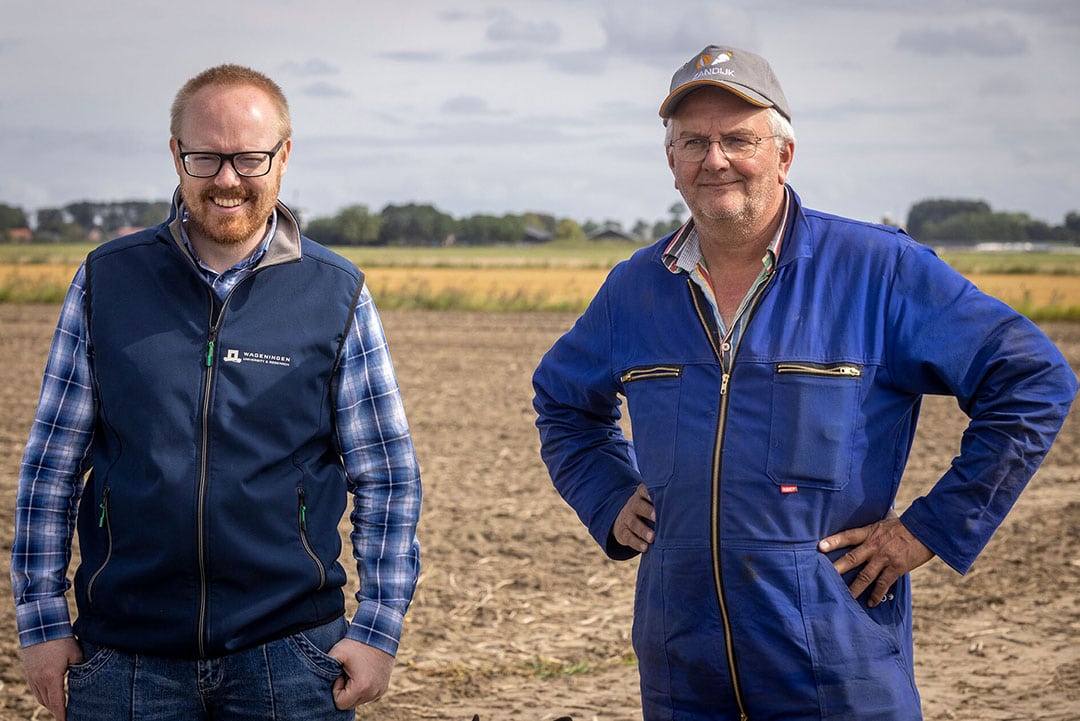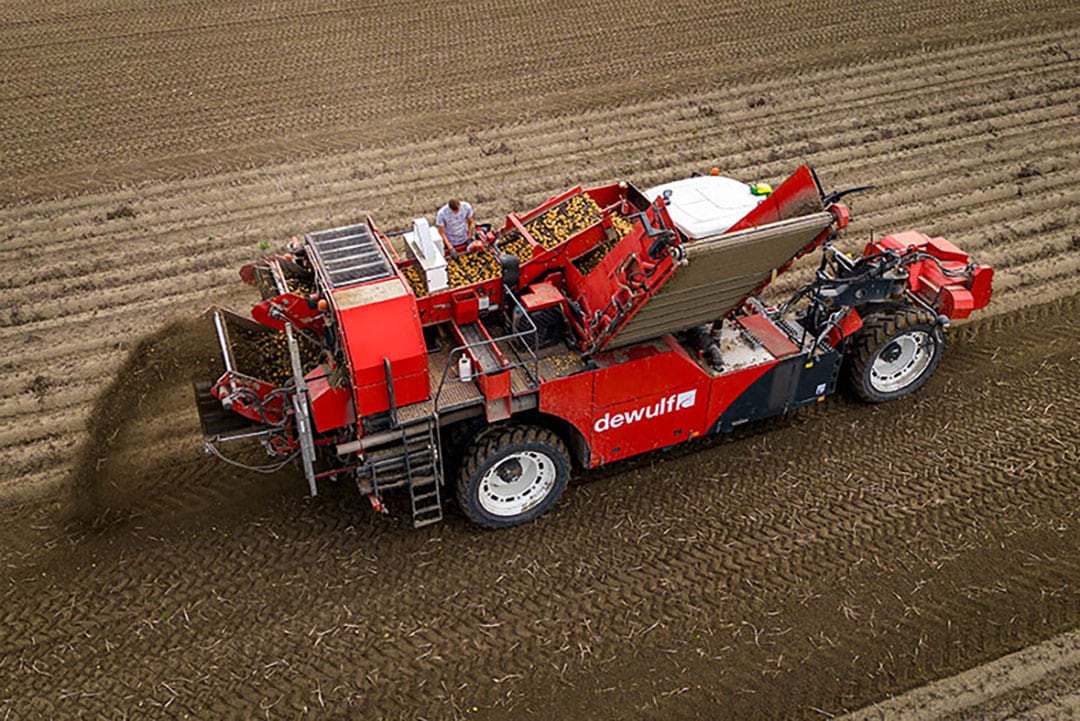Video: site-specific visual yield determination in seed potato harvesting

Dutch grower Anselm Claasen, who takes part in a Dutch precision farming project called NPPL, recently harvested Agria seed potatoes on heavy clay under fine conditions. Besides yield determination with weigh cells, this time his harvester was also equipped with a system for visual yield determination.
A camera is used to photograph everything that passes on the reading belt. The images are stored on a laptop in the cabin. Per long working day, this produces roughly one million photos. See the video at the bottom of this article.
Converting data to yield maps
In the Precision Farming 4.0 project, where visual yield determination is used, at Wageningen University & Research (WUR) the data are converted into yield maps. “Per square metre,” explains WUR precision agriculture researcher Johan Booij, “this shows exactly what has been harvested: the exact number of tubers. Total, but also per poter size. The algorithm that processes the images recognises the potatoes and leaves out clumps.”
Based on the specific gravity of the potatoes, a kilogram yield can also be estimated from the images. “Eventually, you also want to calculate a balance per square metre,” Booij says.
Text continues below image

Clods can negatively impact visual yield determination
Booij rides along on the harvester and he is struck by how nicely distributed in width the tubers pass by on the reading belt. “That helps with good detection of tubers and clods,” he says. He is also struck by how much the amount of clods differs between one side and the other of the plot. The difference in presence of clods can negatively affect yield determination by site-specific weighing.
Three harvester with visual yield determination
In recent years, earlier versions of the system were already being experimented with in the Netherlands. Now three harvesters are also running with the visual yield measurement system in the country within the Precision Agriculture 4.0 and NPPL projects.
For Anselm Claassen, it is precisely this net yield per size that is important. That is what this camera system adds to the yield determination with weighing rollers under the reader belt, with which the DeWulf harvester is also equipped.
Text continues below image

Visual yield determination to help determine cultivation strategies
In seed potato cultivation, however, it is all about getting as many tubers as possible in the best paid sizes. Based on this, Claassen determines his cultivation strategy. Precise yield measurement is one way of gaining insight into the effect of measures.
Claassen warns against drawing conclusions too quickly. “Grading at harvest does not depend only on planting distance. You would like it to, but it doesn’t. The presence of moisture immediately around the tuber in the period of tuber setting is also important. So it is complex to link variation in grading now at harvest directly with variation in plant spacing.”
This is precisely what precision agriculture is all about
Claassen acknowledges that this makes it very complicated to make connections between cause and a consequence of crop measures in one season, which you immediately benefit from in the next season. He realises that this is a matter of years and that the connections are complex. It doesn’t stop him from continuing on the path he has taken. “This is precisely what precision agriculture is all about,” he says.
In August of this year, a company called HarvestEye was working with growers in Mallorca to conduct field trials of current and future iterations of its technology, which measures size and count of potatoes during harvest.
Join 17,000+ subscribers
Subscribe to our newsletter to stay updated about all the need-to-know content in the agricultural sector, two times a week.



